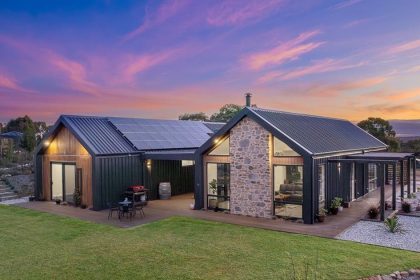A building material expert has called on the construction industry to fill a hole in Australia’s sustainable material market and help kickstart a concrete revolution.
University of Melbourne‘s Dr Rackel San Nicolas has spent years working to develop reliable test methods for new sustainable materials in construction.
She is now on a mission to turn concrete “green” in a bid to help Australia reach its 2050 net zero emissions targets.
But it’s the material’s carbon footprint, not its colour, that the infrastructure materials researcher wants to change, with cement currently accounting for 8 per cent of global emissions alone due to the chemical process requirements behind its production.
Manufacturers are already using cementous material substitutes, like fly ash and slag, to stop up to 500 million tonnes of CO2 being produced each year.
However, Dr San Nicolas told Build-it a lack of Australian calcined clay suppliers, a cement substitute material, is preventing further progress from being made.
“The main roadblock is we don’t have any calcined clay suppliers in Australia – there’s no one to calcine the clay even though everyone is talking about it,” she said.
“We already have so much by-product from other construction sectors we wouldn’t need to mine the clay.”
“Currently what we dig up is either going to waste or on less lucrative things.”
Dr San Nicolas says that using Australia’s clay resources as a blend substitute for general-purpose cement would immediately slash emissions and provide the concrete industry with more ways to reach their emission targets.
“The industry has become more motivated in the last two years with an enormous movement to make better choices and find emission solutions,” she said.
“Industry leaders are trying their best to reach this target of carbon neutral by 2050 by knowing what they can do and what options they have for the future.”
Dr San Nicolas told Build-it that Australia’s vast clay resources could provide a solution for more than 500 years, with the technology already available to replace 30 per cent of cement clinkers with a more sustainable alternative.
That would reduce production emissions by nearly 20 per cent, according to Australian climate change think tank Beyond Zero.
Research has shown this new-age concrete would have the potential to be used in structural construction projects.
However, accessibility in Australia would be needed before larger-scale testing could be conducted.
“The best approach would be to start with non-structural applications, and then as we raise awareness, we could move on to providing structural solutions,” Dr San Nicolas said.







